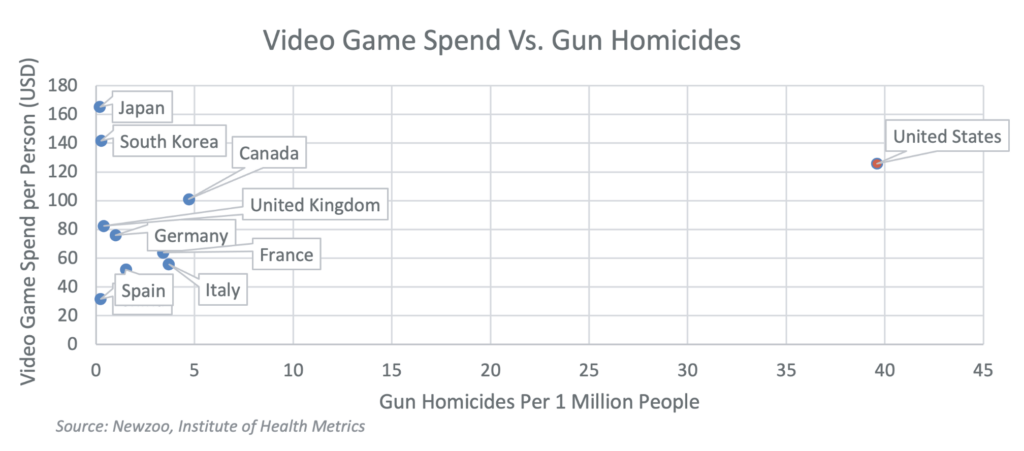Real-world evidence makes it clear that there is no causal link between video games and violent behavior.
Most of the three billion video game players around the world enjoy the same video games—including those containing violent content. Despite this, violent offenses in foreign markets where those same video games are sold are far less common than they are in the United States, suggesting that other factors (e.g. background of the individual, the availability of and access to guns, mental health considerations, etc.) are more relevant to understanding the cause of any particular offense.

The video game industry has a demonstrated, long-standing commitment to ensuring that games, particularly those with violent themes, are used by people of the appropriate age and maturity level.
Creating a positive, inclusive and safe experience for players of all ages is a priority for the entire video game industry.
The video game industry employs a range of tools and information to help parents decide what gameplay experiences are appropriate for their children and to empower parents and players to keep their environments as safe as possible. The industry also works to develop new and more sophisticated safeguards to prevent disruptive behavior before it happens and to incentivize positive behavior, such as proactive and reactive technologies, human moderation and community standards.
For 30 years, the industry has worked through the Entertainment Software Rating Board (ESRB) to ensure that consumers—especially parents and caregivers—have the resources, including voluntary age ratings and content descriptors, needed to make informed decisions about video games.
The effectiveness of these efforts has been praised by the U.S. Supreme Court and U.S. Federal Trade Commission (FTC).

















